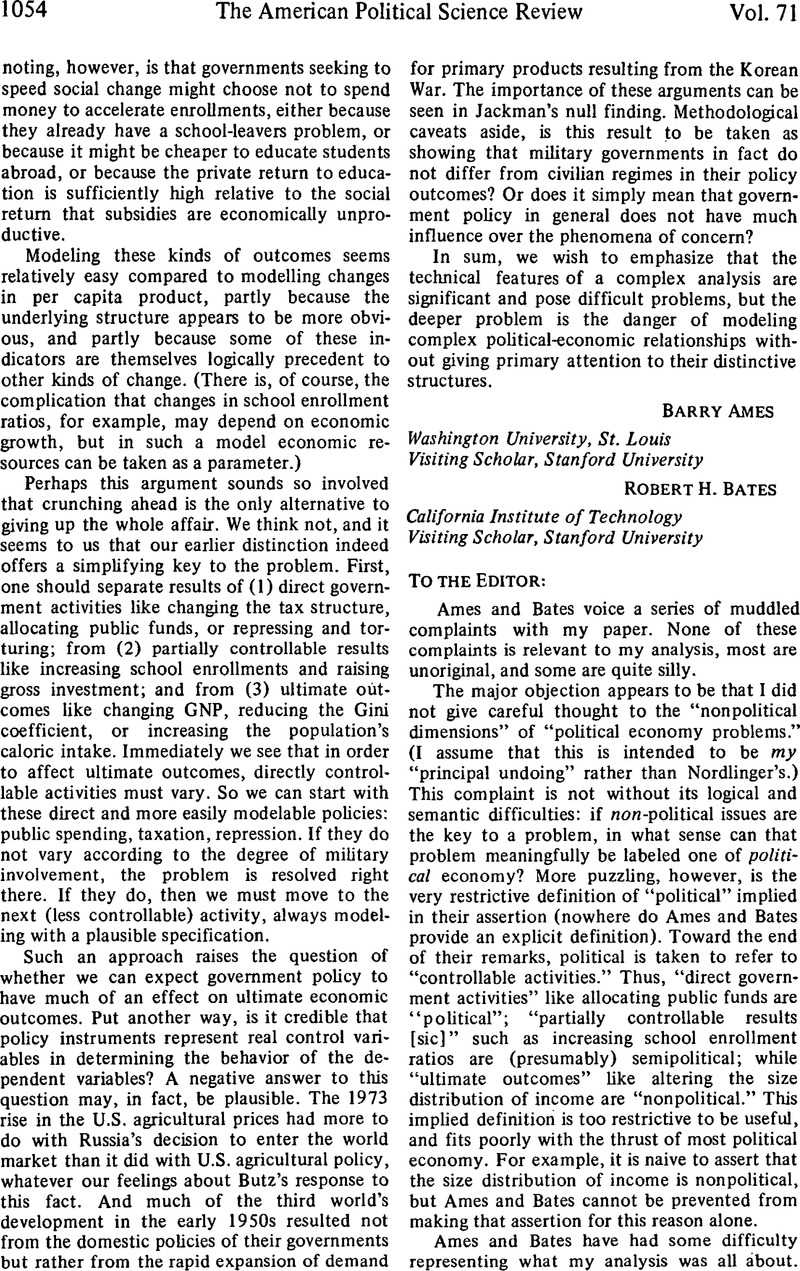No CrossRef data available.
Article contents
[no title]
Published online by Cambridge University Press: 01 August 2014
Abstract

- Type
- Communications
- Information
- Copyright
- Copyright © American Political Science Association 1977
References
page 1055 note 1 In fact, Huntington's argument and Nordlinger's results seem to be widely accepted. See, for example, Finer's, S. E. analysis in the new edition of his well-known The Man on Horseback: The Role of the Military in Politics (Baltimore, Md.: Penguin Books, 1976), pp. 260–267 Google Scholar.
page 1055 note 2 On this general subject, see for example Rao, Potluri and Miller, Roger L., Applied Econometrics (Belmont, Calif.: Wadsworth, 1971), pp. 60–67 Google Scholar.
page 1055 note 3 For a recent discussion, see Alwin, Duane F. and Hauser, Robert M., “The Decomposition of Effects in Path Analysis,” American Sociological Review, 40 (02, 1975), 37–47 CrossRefGoogle Scholar.
page 1056 note 4 For example, they claim that a variable that has only “three levels” ipso facto suffers from “problems of limited variation.” The absurdity of this remark is clear when we think of binary variables (e.g., the black-white distinction in the U.S. and the Catholic-Protestant distinction in Northern Ireland): presumably Ames and Bates do not think that such variables can have only trivial (i.e., substantively meaningless) variation. Surely they know that to address the question of limited variation, one compares the observed dispersion of a variable with its theoretically possible range.



Comments
No Comments have been published for this article.